Pothos (Epipremnum aureum), often called Devil’s Ivy, is one of the most popular houseplants around the world—and for good reason. With its heart-shaped leaves, trailing vines, and low-maintenance nature, the pothos plant is a favorite among beginners and seasoned plant lovers alike. Whether you’re growing it in a hanging basket, letting it trail from a shelf, or training it to climb, pothos offers unmatched versatility and lush greenery.
But like any living thing, it needs the right care to truly thrive. In this detailed guide, you’ll discover how to care for a pothos plant for healthy growth—covering everything from light and watering to pruning and propagation.
1. Understanding the Pothos Plant
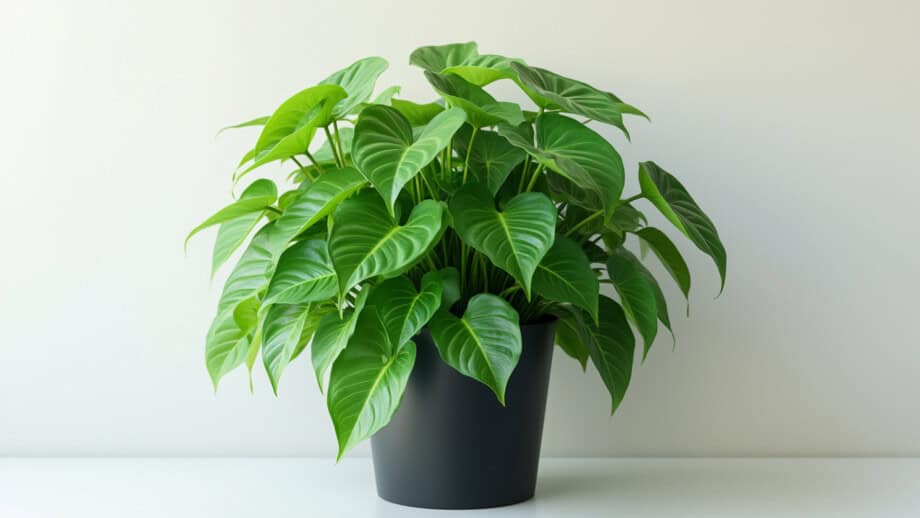
Before diving into care tips, it’s important to understand the basic traits of the pothos:
- Scientific name: Epipremnum aureum
- Common names: Devil’s Ivy, Golden Pothos, Money Plant (in some countries)
- Origin: Southeast Asia and the Solomon Islands
- Growth habit: Vine-like, can trail or climb
- Toxicity: Mildly toxic to pets and humans if ingested
There are several beautiful pothos varieties, including Golden Pothos, Marble Queen, Neon Pothos, and Jade Pothos—each with slightly different leaf patterns but similar care requirements.
2. Ideal Lighting Conditions
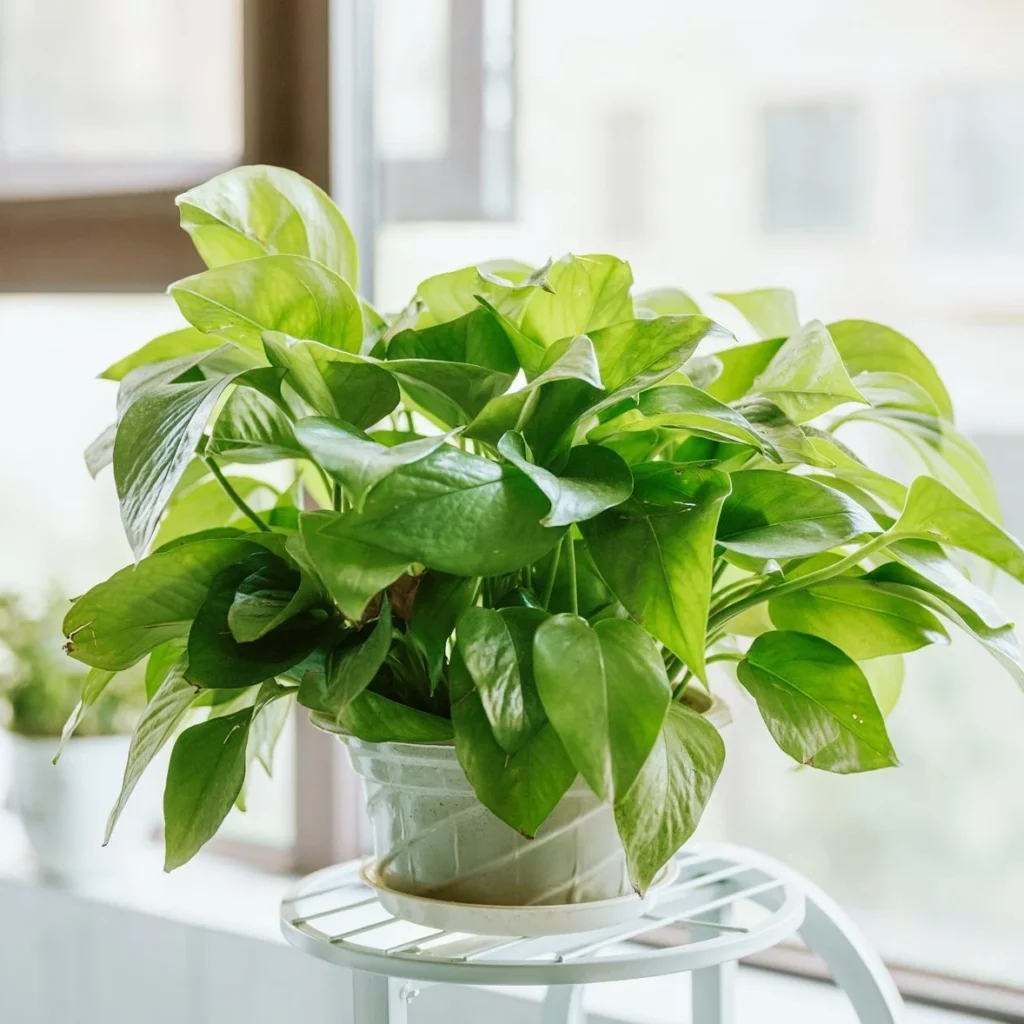
Pothos are known for their ability to thrive in a range of lighting conditions, making them ideal for nearly any indoor environment.
Best Light:
Bright, indirect light is ideal. This encourages vibrant leaf color and faster growth.
Avoid:
- Direct sunlight: Can scorch leaves.
- Deep shade: Will cause slow growth and faded leaf variegation.
Tip: If your pothos is placed in low light, opt for solid green varieties like Jade Pothos, as variegated types like Marble Queen may lose their color patterns in dim conditions.
3. Watering Requirements
Overwatering is the most common mistake with pothos care. These plants prefer their soil to dry out slightly between waterings.
Watering Guidelines:
- Water when the top 1–2 inches of soil are dry.
- Reduce watering in winter.
- Use room-temperature water to avoid shocking the roots.
Signs of Overwatering:
- Yellowing leaves
- Mushy or black roots
- Moldy soil or a musty smell
Solution: Ensure your pot has proper drainage holes, and never let your pothos sit in standing water.
4. Choosing the Right Soil and Pot
Pothos aren’t picky about soil, but good drainage is essential.
Soil:
- Use a well-draining indoor potting mix.
- Add perlite or coco coir to improve aeration and drainage if needed.
Pot:
- Choose a container with drainage holes.
- Terracotta pots are excellent because they allow soil to dry faster.
Repot every 1–2 years or when the roots outgrow the container.
5. Fertilizing for Vibrant Growth
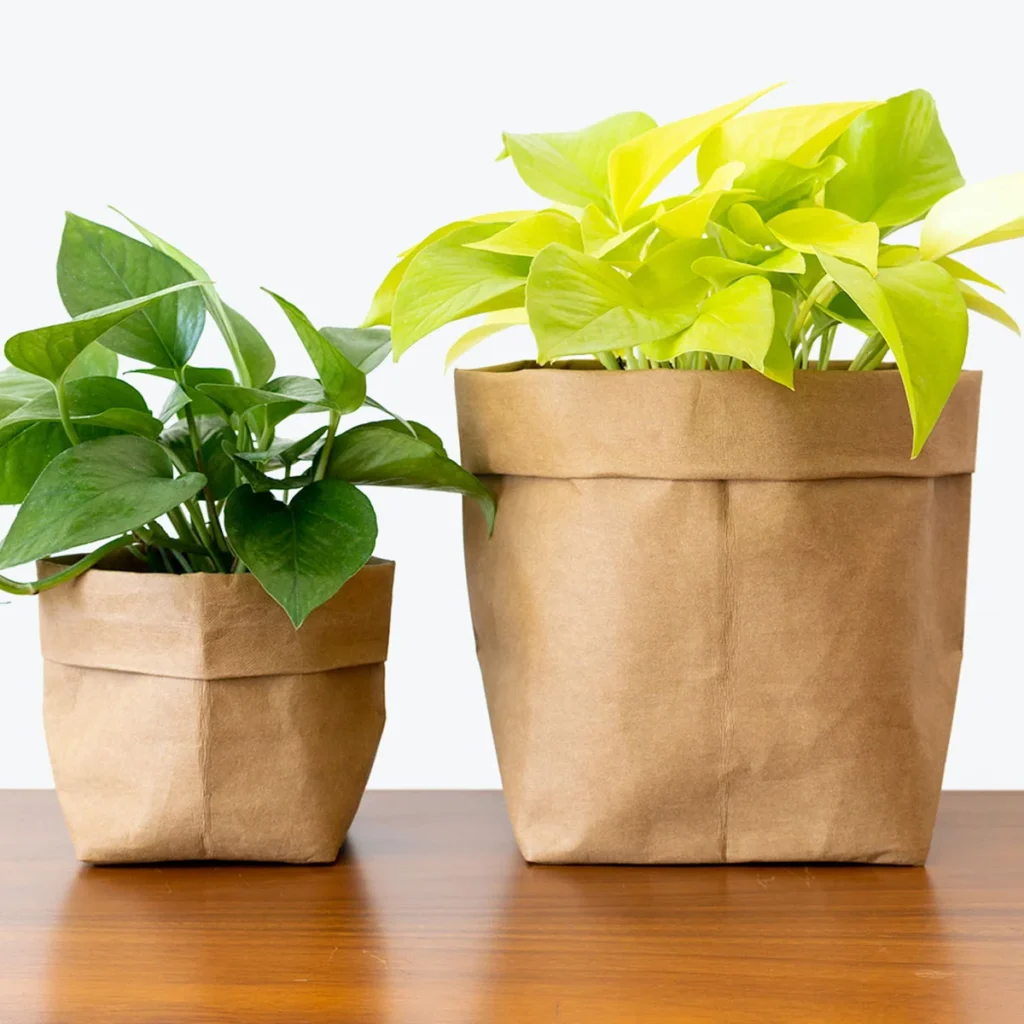
Although pothos can survive without fertilizer, feeding it regularly will encourage faster and healthier growth.
Fertilizing Tips:
- Use a balanced, water-soluble houseplant fertilizer (e.g., 20-20-20).
- Feed once a month during the growing season (spring and summer).
- Avoid fertilizing in fall and winter when growth slows down.
Over-fertilization can lead to salt buildup, which may harm roots. If you notice a white crust on the soil surface, flush the soil with water to remove excess salts.
6. Pruning and Shaping Your Pothos
Pruning is not only helpful for controlling size but also encourages bushier, fuller growth.
When and How to Prune:
- Trim back long vines any time they become too leggy.
- Use clean, sharp scissors or pruning shears.
- Make cuts just above a leaf node (where the leaf joins the stem).
Bonus: You can propagate the cuttings and grow new pothos plants!
7. Propagating Pothos Plants
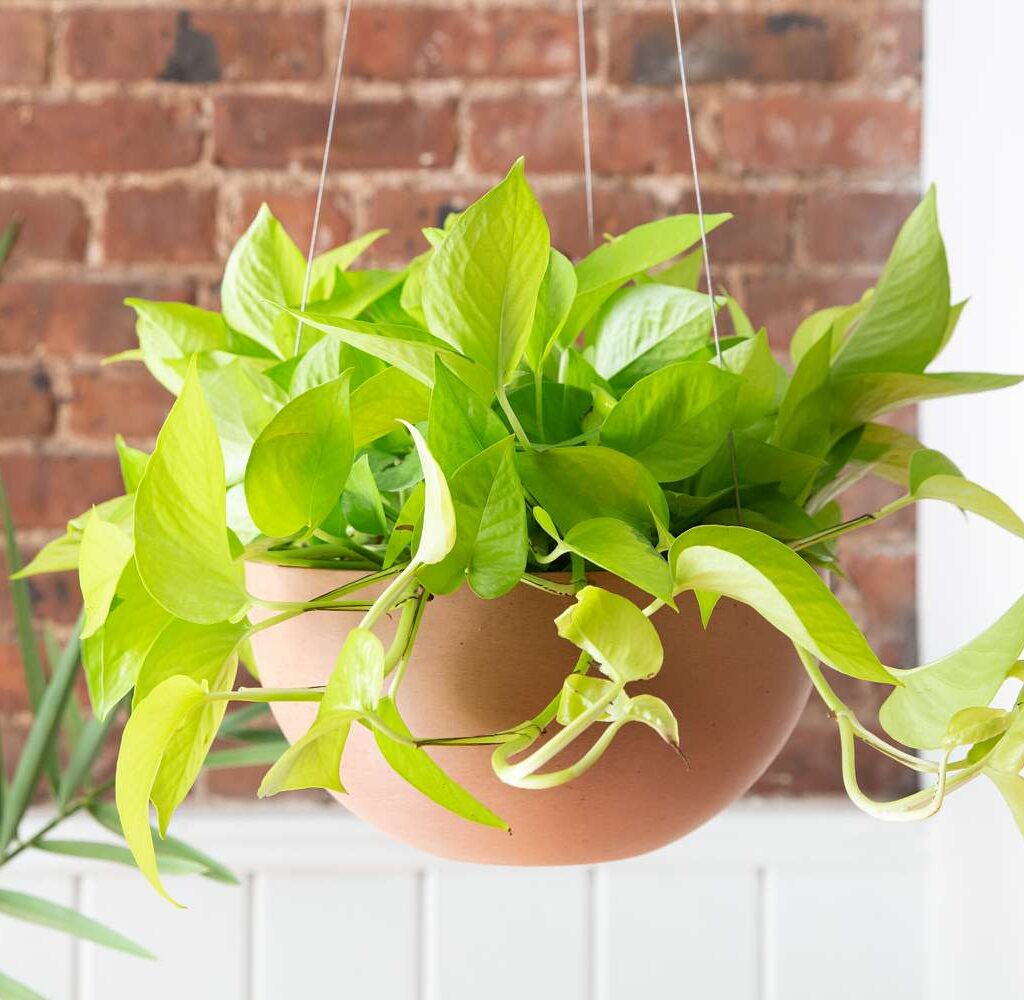
One of the joys of growing pothos is how easy they are to propagate, making them perfect for gifts or expanding your plant collection.
Steps for Water Propagation:
- Cut a healthy stem just below a node with 2–4 leaves.
- Place the cutting in a glass of water, ensuring the node is submerged.
- Put the glass in a spot with indirect light.
- Change the water every 3–4 days.
- Once roots are 2–3 inches long, plant in soil.
Soil Propagation:
- Insert cuttings directly into moist soil and cover loosely with a plastic bag to retain humidity.
8. Common Problems and Solutions
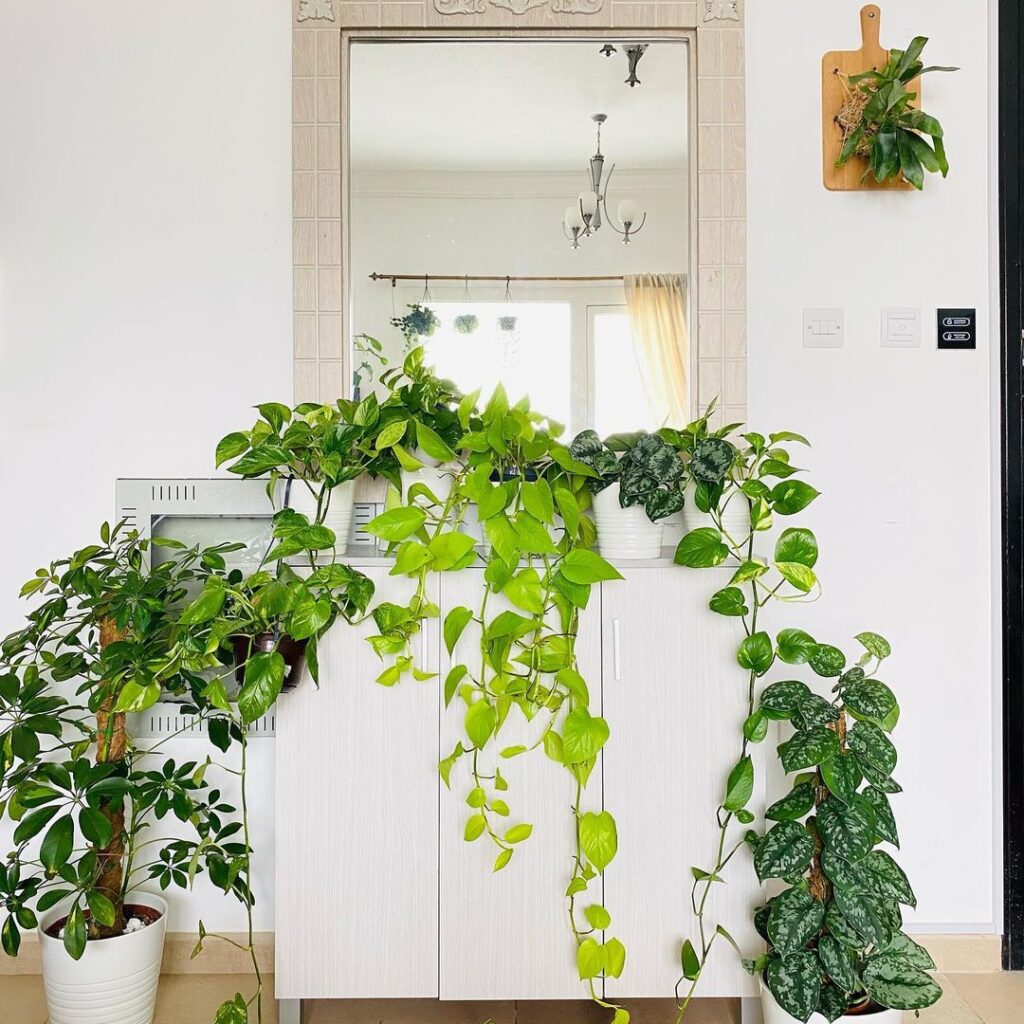
Even though pothos are hardy, they can face a few issues. Here’s how to identify and fix them:
| Problem | Cause | Solution |
|---|---|---|
| Yellowing leaves | Overwatering or poor drainage | Let soil dry, improve drainage |
| Brown leaf tips | Low humidity or underwatering | Increase humidity, water consistently |
| Wilting leaves | Either too dry or too wet | Check soil moisture level |
| Loss of variegation | Low light | Move to a brighter location |
| Root rot | Waterlogged soil | Repot in fresh soil, remove dead roots |
9. Pothos in Different Settings
Pothos adapt well to many environments, making them excellent for:
Indoor Hanging Baskets
- Showcase trailing vines for a lush, cascading effect.
Windowsills
- Get bright indirect light near east or north-facing windows.
Wall or Trellis Training
- Encourage vertical growth by attaching vines to a wall or pole.
Office Spaces
- Tolerant of artificial light and occasional neglect.
10. Seasonal Care Tips
Your pothos needs slightly different care depending on the time of year:
Spring & Summer (Growing Season)
- Water more frequently.
- Fertilize monthly.
- Prune to shape and propagate.
Fall & Winter (Dormant Period)
- Water less often.
- Avoid fertilizing.
- Move away from cold drafts and heating vents.
11. Benefits of Growing a Healthy Pothos
A well-cared-for pothos plant not only looks good—it offers several benefits:
- Air purification: Removes toxins like formaldehyde and benzene from the air.
- Low maintenance: Ideal for busy lifestyles.
- Mood boosting: Lush greenery improves emotional well-being.
- Aesthetic versatility: Complements any interior style, from modern to rustic.
Conclusion
Caring for a pothos plant is simple yet rewarding. With just a bit of attention to light, watering, pruning, and soil, your pothos can thrive for years—gracing your home with its elegant vines and purifying presence. Whether you’re a beginner gardener or someone looking to expand their indoor jungle, pothos offers a lush, low-maintenance companion that grows along with you.
By following the guidance in this complete care guide, you can ensure healthy, vibrant growth and enjoy the many benefits of this beloved indoor plant. So grab your watering can, find a sunny corner, and let your pothos flourish.





Leave A Comment